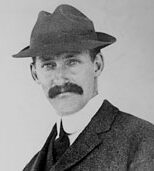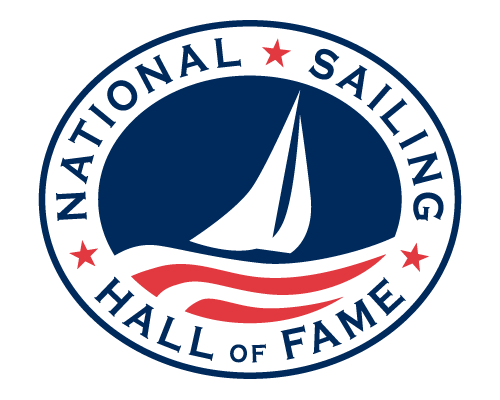
William Starling Burgess
December 25, 1878 - March 19, 1947
Boston, Massachusetts
Restless Innovator
Sailboat designs of W. Starling Burgess by year (SailboatData.com) Smithsonian: No Ordinary Being Donan Raven’s Sailing Trivia article on J-Classyacht Rainbow Mystic Seaport collection: W. Starling Burgess Papers Classic Yacht Info – Designer Burgess Burgess: A Man of Prodigious Talents & Controversies William Starling Burgess wikipedia page
Yachting is fortunate that the varied interests of the multi-talented Starling Burgess returned, after a 15-year romance with aircraft, to the design of fast sailboats, a skill he first learned on his father Edward’s knee. The elder Burgess designed Cup defenders Puritan (1885), Mayflower (1886), and Volunteer (1887). When his son, Starling, designed a brutally fast, innovative 52-footer ( Outlook ) in 1901 during his senior year at Harvard, the Burgess progression seemed in place. The first hint of young Starling’s wide-ranging talent was his design of a recoilless machine gun when he was 16. Some claim the type face he fashioned for his yacht business turned out to be “New Times Roman,” but that is labeled “interesting speculation,” by his biographer, Llewellyn Howland III. Burgess was also in the thick of the “auto-boat” craze of the early 1900s, in which ever larger engines were put into small boats. Burgess’ Mercedes held the speed record at one time. The Wright Brothers’ initial flight in 1903 had a strong effect on Burgess. By 1909, he was heavily into aeronautics, having built an airplane in which he made one of the first powered flights in New England. He started his own aircraft company, and became among the first pilots to take off and land on the water. In 1915, he was awarded aviation’s most prestigious award, the Collier trophy for the Burgess-Dunne, a pilot-friendly pusher aircraft with no tail and swept back wings. Burgess’ company was widely revered for its light, strong product. It was only after World War I that Burgess returned to yacht design. Burgess did so with a flourish, cutting his J-class teeth on the re-rigging of Vanitie , that nearly defended the Cup. He also designed lovely one designs, including the Atlantic and Yankee classes. His 8-, 10-, and 12-Metres, and M and K ( Manxman ) class designs were marvels of yachting in the 1920s. After moving to New York City in 1928, Burgess designed the breakthrough stays’l schooners Nina and Advance . His first Cup defender was Enterprise, in 1930, that sported a light, duralumin mast and struts. He designed Rainbow for the 1934 Cup defense, and then mighty Ranger – with the help of his young partner named Olin Stephens – in 1937. Burgess somehow found time to keep other creative irons in the fire. He designed the Dymaxion car for his friend, renowned architect and systems theorist, Buckminster Fuller. Excited by the potential of aluminum, in 1935, Burgess joined the fledgling Aluminum Company of America (Alcoa) to help develop a wider use of corrosion-resistant alloys for ship construction. “The restless Burgess met challenges and had to move on,” Howland writes. “No telling what he would have done if he had worn just his yacht design cap for 50 years.” – Roger Vaughan
Preserving America’s Sailing Legacy
Engaging Sailing’s Next Generation
Stay Connected to the National Sailing Hall of Fame
